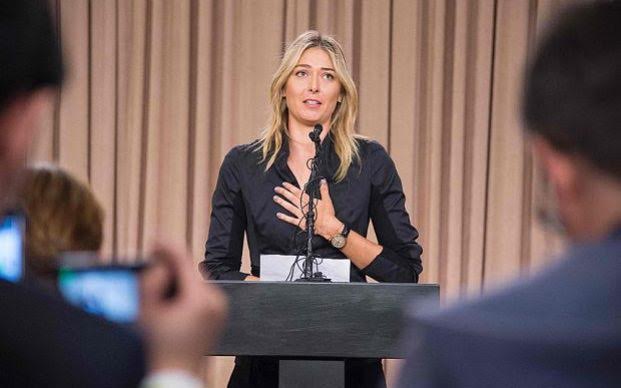SHARAPOVA: Tennis champion Maria Sharapova, a household name, failed a drug test at the Australian Open.
By Lily Mitchell, Staff Writer
On March 7, 2016, Maria Sharapova held a press conference. She owned up to using meldonium, the drug that landed on the International Tennis Federation’s (ITF) banned list as of January 1, 2016. The World Anti-Doping Agency (WADA) sent out emails titled “Main Changes to the Tennis Anti-Doping Programme for 2016” back on December 22, 2015 that Sharapova and her team of coaches and trainers somehow missed. Uh oh. While she undoubtedly did the right thing by coming forward, this could still leave a stain on her Wimbledon-white career, a stain not even the toughest of stain removers may be able to cleanse.
Meldonium, a Latvian drug that remains unapproved by the Food and Drug Administration (FDA), is reportedly designed to aid those with heart conditions. Meldonium improves endurance and increases oxygen uptake, something that coincidentally enhances performance. The company responsible for manufacturing the drug, Grindeks, states that this drug is typically administered for four to six weeks, while Sharapova stated that she had taken meldonium for ten years before her situation at January’s Australian Open.
With diabetes running in her family, she claims to have used the drug as a preventative measure. Regardless of her story behind the usage, the ITF has the potential to enforce up to a four-year ban for her WADA infraction. This could mean no more Sharapova until she is 33—an age that is considered to be near retirement for professional tennis. Seem harsh? The ITF placed the drug on their list due to an observance of increased usage, and Grindeks reports that meldonium is their best-seller. After all, it is rather easy to see how meldonium could be tempting to a professional tennis player when it has the power to protect the heart during such a high-stamina athletic pursuit.
Some players on the professional tour expressed support for Maria Sharapova, such as current world number one, Serena Williams (who still had to defend herself and diffuse any possible suspicions about her muscular physique by expressing what she has learned about health from her sister Venus’ autoimmune disease, such as the importance of a healthy diet). However, many players (and sponsors) have shunned Sharapova. Top ranked men’s player, Andy Murray, responded to the ordeal by stating that “taking a prescription drug that you don’t necessarily need, but just because it’s legal, that’s wrong, clearly. That’s wrong.” While Murray is disappointed, Sharapova’s three biggest sponsors, Nike, Tag Heuer, and Porsche, have all suspended their contracts. This makes for an awkward BNP Paribas Open tournament at Indian Wells, where Nike’s Sharapova collection is proudly on display at the Tennis Collections shop on the grounds.
What does this mean for the sport? Unfortunately, it results in a negative twist on a sport that has a reputation for being clean-cut. While it is not uncommon to hear about doping in sports like football and baseball, tennis rarely makes headlines. With hearts slightly broken, fans and players alike will now have to dispel the looming cloud of a failed drug test and carry onward to the upcoming clay court season.

